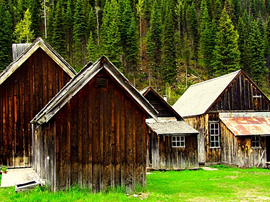Conservation and the Indian City: bridging the gap
Conservation and the Indian City: bridging the gap, Poonam V Mascarenhas and Vinayak Bharne (eds), Habitat Forum INHAF and MYLIVABLECITY, Ahmedabad, 2023, 191 pages, 78 black-and-white illustrations.
This book is an outcome of a webinar series that explores environmentally friendly cities, participatory planning, and inclusive and sustainable development. It is divided into three parts, covering issues related to heritage conservation. The sections cover the future of 20th-century architecture in Indian cities; India’s world heritage cities and living sites; and conservation regulations and urban planning. The articles are written by professionals, academics and researchers. Each section ends with a dialogue between the editors and the authors, which will certainly captivate readers.
The first section covers conservation practices and examines the possibilities of bridging the gap between the heritage value of iconic modern structures and institutionalised challenges of modernism, economic development and market culture in India. It begins by throwing light on the difficulties of responding to ‘impatient capital’ in city development in the context of India’s predominantly informal economy. The following deliberation deals with the role of community participation and emphasises that both the architectural fraternity and the common people are helpless in the face of ‘politics-supported market forces’. Politicisation of architecture, co-relations between city development and regimes, and engineering heritage as a nation-building activity since the early post-independence period are highlighted here.
There is a focus on specific issues of modern heritage, with examples of projects from Ahmedabad, Chandigarh, Delhi, Mumbai and Pondicherry. The section illustrates the current scenario of conserving 20th-century architecture in India. It is quite relevant, as the present political disposition has been developing a new narrative of urban transformation with utmost urgency and indulges ruthless demolition of individual monumental structures from this period. The looming threat to Louis Khan’s Indian Institute of Management building in Ahmedabad is an example.
The next section delves into fundamental questions of whether world heritage designation is a mere branding or if it provides impetus to transformative thinking on regeneration of inclusive, liveable and resilient urban spaces in India. It covers extensively acknowledged works from Jaipur, Ahmedabad, Delhi and Varanasi. The two sketches of plans used in this section appear to be incomplete and unreadable without proper legend, perhaps lacking greater editorial input. The concluding article on the deletion of Liverpool from the world heritage list is one of the two instances from the international scenario which clearly reveal the potential conflict between heritage and development.
The final section discusses policy, regulation, administration and activism of the common people and questions the effectiveness of conservation regulations in the country. Citing examples of Pune, Mysuru and Goa, this section identifies problems of representations of second- and third-tier cities, and emphasises the need for recognising people’s aspirations voiced through local protests under the auspices of action groups.
The editors of the volume have taken discussion on heritage concerns to a new level. The book will greatly help young professionals, academics, students and heritage enthusiasts to understand the emerging trends of heritage management in Indian cities.
This article originally appeared as ‘Urban narratives’ in the Institute of Historic Building Conservation’s (IHBC’s) Context 178, published in December 2023. It was written by Jana Das Chaudhuri, urban heritage strategist and critic.
--Institute of Historic Building Conservation
Related articles on Designing Buildings
IHBC NewsBlog
SAVE celebrates 50 years of campaigning 1975-2025
SAVE Britain’s Heritage has announced events across the country to celebrate bringing new life to remarkable buildings.
IHBC Annual School 2025 - Shrewsbury 12-14 June
Themed Heritage in Context – Value: Plan: Change, join in-person or online.
200th Anniversary Celebration of the Modern Railway Planned
The Stockton & Darlington Railway opened on September 27, 1825.
Competence Framework Launched for Sustainability in the Built Environment
The Construction Industry Council (CIC) and the Edge have jointly published the framework.
Historic England Launches Wellbeing Strategy for Heritage
Whether through visiting, volunteering, learning or creative practice, engaging with heritage can strengthen confidence, resilience, hope and social connections.
National Trust for Canada’s Review of 2024
Great Saves & Worst Losses Highlighted
IHBC's SelfStarter Website Undergoes Refresh
New updates and resources for emerging conservation professionals.
‘Behind the Scenes’ podcast on St. Pauls Cathedral Published
Experience the inside track on one of the world’s best known places of worship and visitor attractions.
National Audit Office (NAO) says Government building maintenance backlog is at least £49 billion
The public spending watchdog will need to consider the best way to manage its assets to bring property condition to a satisfactory level.
IHBC Publishes C182 focused on Heating and Ventilation
The latest issue of Context explores sustainable heating for listed buildings and more.

















